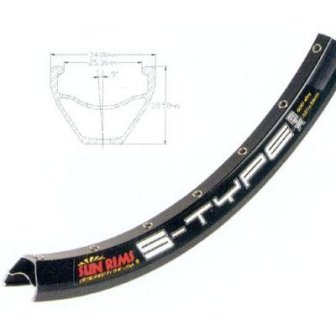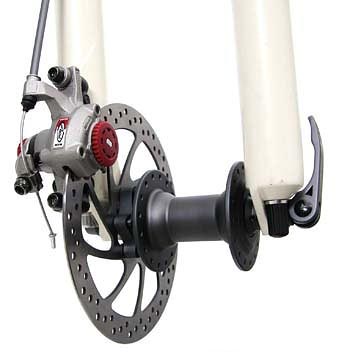What is a bicycle made of?
Bicycle diagram
A lot of slang words are used in the bicycle industry. In most cases this is useful for describing the bike or components accurately, in some cases they are used by unscrupulous sellers to mislead you. In this guide, we will try to explain some of the more common terms and phrases so that you can keep up with the conversation and break it down in detail. what is a bicycle made of.
Be aware of! Wherever you can buy a bike, product information is usually in the form of a specification sheet. More expensive bikes have precise, detailed specs, while cheaper bikes (especially those under $300) will either have no specs or be littered with nonsense. Be a smart customer, know what you are buying!
This manual contains 2 sections: bike parts and description of bike components.
Components of a bicycle.

1. Brake levers
2. Shifters
3. Grips
4. Stem
5. Rudder
6. Steering column
7. Fork
8. Rims
9. Tires
10. Knitting needles
11. Bushings
12. Brakes
13. Saddle
14. Seatpost
15. Rear shock absorber
16. Cassette
17. Connecting rods with stars (system)
18. Pedal attachment points
19. Chain
20. Rear derailleur
21. Front Derailleur
22. Brake disc
23. Frame: top tube
24. Frame: down tube
25. Suspension hinges
26. Suspension links
27. Frame: rear triangle
Many experienced cyclists, as well as beginners, sometimes do not even guess what their bike consists of. Every year, bicycle companies introduce more and more new technologies in the production of a bicycle, however, it always has a frame, two wheels, fork, saddle, handlebars, and other unchanged components. When choosing a bike, be at least a little technically savvy. Let's take a closer look at the components of a bike. So what is a bicycle made of?
Description of bicycle components
1. Brake levers. Serve to control the brake system of a bicycle. The handles are located on the right and left of the steering wheel. As a rule, the left handle is responsible for the front brake, the right handle for the rear. Be careful with the brake lever that controls the front brake, pressing it at high speed may cause the bike to roll over. Try to brake with two handles at the same time, so the bike does not lose stability.

2. Shifters. Shifters (the second name is gripshift) is a mechanism for remote gear shifting of a bicycle, which is fixed on the steering wheel for ease of use. Depending on the situation, you can shift up or down the gear. Shifters are lever (shifting is carried out by two levers) and rotary (shifting is carried out by turning back and forth a special ring mounted on the steering wheel).

3. Grips. Grips are rubber grips that help the cyclist to grip the handlebar more comfortably and securely. In road bikes, the role of grips is performed by a special steering tape.

4. Steering wheel removal. The steering stem is used to connect the steering wheel and frame. In most cases, it can be adjusted in height, so that the cyclist can choose for himself the height and angle of the steering wheel.

5. Steering wheel. The steering wheel is an important element of bicycle control. Shifters, brake levers, grips and other bicycle accessories (bell, bicycle computer, bicycle headlight, etc.) are attached to it.

Depending on the style of riding, it can be of several types, as well as width sizes: straight with a bend, short (for cross-country, 540-620 mm), curved with a rise (for trail, 620-670 mm), there are also wide reinforced handlebar (designed for extreme skiing, 660-710 mm). For road bikes, handlebars are produced in a special curved shape and have a size of 380-460 mm.
6. Steering column. The steering column is designed to connect the fork and the bicycle frame. It contains an upper and lower cup molded into the head tube, in which there are two heavy-duty industrial bearings with cones.

7. Fork. The fork is one of the main elements of a bicycle. It is attached to the frame, and the front wheel and steering stem are attached to it, respectively. Often the fork is equipped with a shock absorber, which helps to comfortably overcome bumps in the road.

8-11. Wheels. Rims, Tires, Tubes, Spokes and Bushings - these elements make up the wheels of a bicycle. The wheel must meet two criteria - to be light and at the same time strong. The speed of movement directly depends on the quality of the wheel. Let's take a closer look at each element of the wheel.

The hub is the part of the wheel that makes it spin. A cassette with sprockets is attached to the rear wheel hub. to drive the wheel from the system via a chain. The bushings are attached to the front and rear forks of the bicycle using the so-called eccentric couplers (quick clamps).

The rim is the part of the wheel that acts as the frame for the tire. I distinguish bicycle rims by diameter and width. The main material for the manufacture of the rim is aluminum. The rim can be one-two-and even three-layered. The rim is attached to the hub with spokes.

The spokes are used to connect the hub and the rim of the wheels, they affect the rigidity of the bicycle wheel. The number of spokes varies depending on the type of bike, with 24 to 48 spokes generally being used. Most often, wheels contain 32 or 36 spokes.

Tires are an element of a bicycle wheel, which serves to ensure comfortable and safe movement. It also protects the camera from damage. Tires differ from each other in diameter and width in the same way as rims, and also, depending on the nature of riding and the condition of the road surface, in the tread pattern.

The camera is an element of the bicycle wheel, located inside the tire. It is inflated to the desired operating pressure. Chambers are distinguished by diameter, width, as well as the material of manufacture and its thickness. There are tubeless wheels, in which case the tire acts as a chamber.

Nipple - element of the chamber in which the valve is located. The valve serves to supply air to the chamber during inflation. There are two types of nipple - bicycle (Presta) and automobile (Shrader). In view of practicality, the automobile nipple has become more widespread.

12. Brakes. Brakes provide a smooth stop of the bike by slowing down the movement of the wheels. Brakes are front and rear, and are also divided into mechanical and hydraulic, rim and disc.

13. The saddle is a mandatory individual component of each bicycle. The saddle is attached to the bike with a seatpost. Each cyclist chooses a saddle independently based on a comfortable fit, fatigue and riding efficiency. Try to find the most comfortable saddle for you. Remember that saddles vary in width, degree of softness, the presence / absence of depreciation elements, and the material of the skin. Also note that there are male and female saddles.

14. Seat post. It is used to attach the saddle to the bike frame. Thanks to the ability to change its height, you can easily adjust the bike to your height. They differ in weight and method of attachment to the frame and saddle.

15. Rear shock absorber. The rear shock absorber provides the work of the rear triangle of the frame and serves to soften all the bumps in the road surface. It is attached between the front and rear triangles of the frame. Shock absorbers differ in the type of design - there are air and spring shock absorbers. Modern air shocks work great and are lighter than springs.

16. Cassette. A cassette is called the rear wheels of a bicycle drive. This is a set of 6 to 9 sprockets of different diameters and number of teeth that are attached to the rear wheel hub. The cassette is designed to reduce or increase the gear ratio between the system and the rear wheel, it is provided by transferring the chain from a smaller sprocket to a larger one and vice versa, it is controlled using shifters.

17. Rods with stars. Cranks with stars form the so-called "system" another name - the front wheels of the bicycle drive. Contains a maximum of three stars of different diameters. The connecting rods are attached to the frame using a carriage that is screwed into a special hole in the frame. Most modern cranksets come with the bottom bracket already integrated. Bicycle pedals are attached to the cranks.

18. Pedals. Sometimes bikes are shipped without pedals. The cyclist already independently determines the type of pedals that he needs. There are two types of pedals - contact and non-contact. To use clipless pedals, you need special cycling shoes with mounts. Pedals are made of steel alloys or aluminum.

19. Chain. The chain is used to transfer traction from the system (rods with sprockets) to the cassette, in other words, it connects the drive front sprockets to the driven rear sprockets.

20-21. Switches. Gear shifters are mechanisms that serve to transfer the chain from a larger diameter of stars to a smaller one, or vice versa. The rear derailleur is mounted on the so-called "cock" and works with the cassette (rear stars), the front derailleur works with the system (front stars).

22. Brake disk. The brake disc is part of the disc brake, it is the part that the brake pads rub against, which causes the bike to slow down when braking.

23-24, 27. Frame. The frame of a bicycle is the main unit with which all the components of the bicycle are connected into one whole. Frames differ in the type of material used in the manufacture, steel, aluminum, titanium, carbon frames are distinguished. Frames also differ in geometry - there are frames for road bikes, mountain bikes, hybrids. Frames are two-suspension (on two shock absorbers) and rigid (without shock absorbers). There is also a distinction between male and female frames (with a lowered top tube or no top tube at all).

25-26. Suspension. Suspension refers to the unique arrangement of hinges and suspension links that provide excellent performance of the bike's suspension system.

We hope after reading the article you have found all the answers to the question " Bicycle Composition«.




